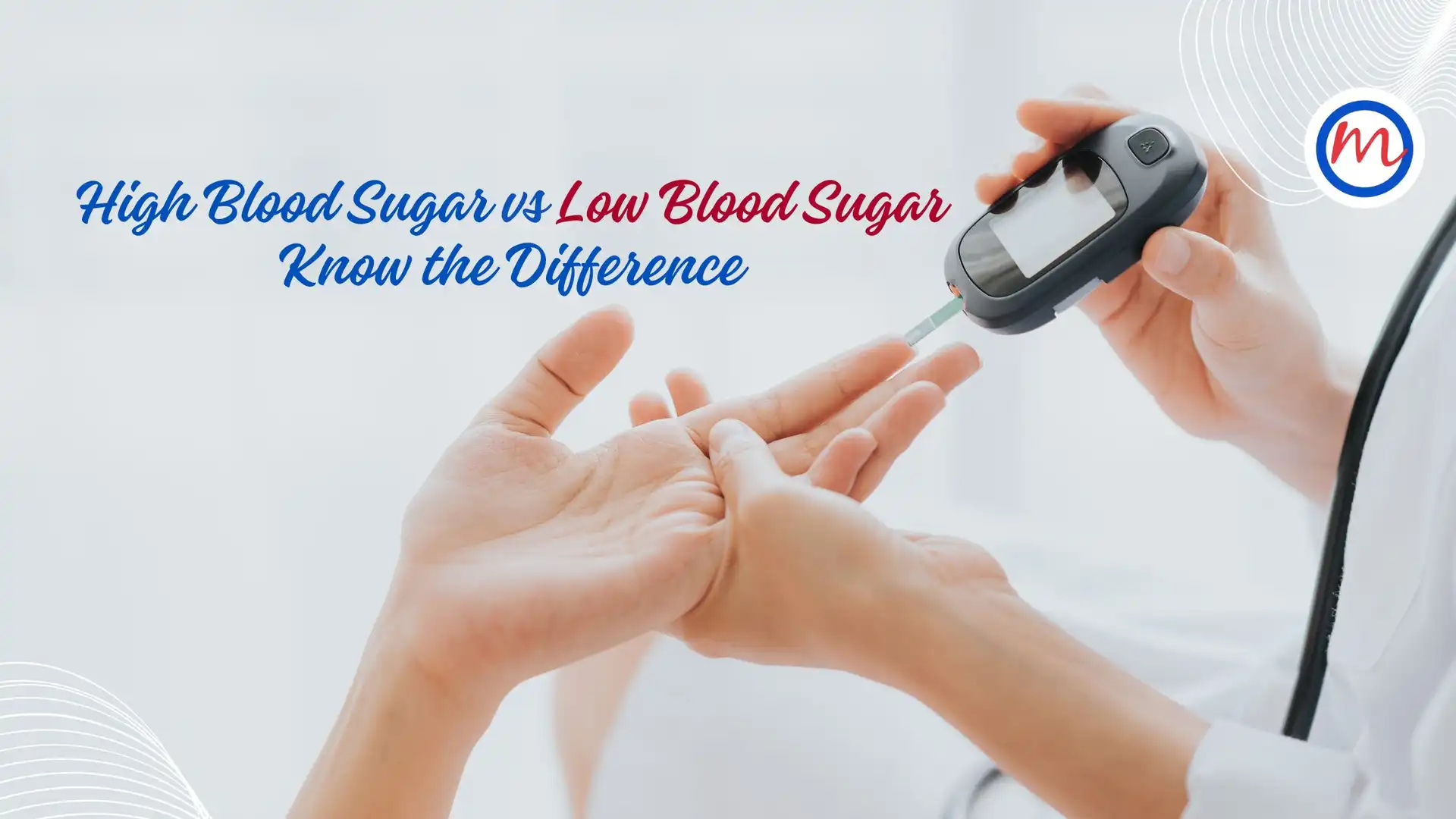High Blood Sugar vs. Low Blood Sugar: Know the Difference
Introduction: What is Blood Sugar?
Blood sugar or blood glucose is the primary energy source for the body’s cells. It needs to be kept within a specific range to ensure optimal bodily function. When this balance is disrupted, it can lead to two conditions: high blood sugar (hyperglycaemia) and low blood sugar (hypoglycaemia). Understanding these differences is crucial for effective diabetes management and overall well-being.
Understanding High Blood Sugar (Hyperglycaemia)
High blood sugar occurs when glucose builds up in the bloodstream, usually due to insulin resistance or insufficient insulin production. Common triggers include:
- Excessive carbohydrate intake
- Physical inactivity
- Missed medications
- Emotional stress or illness
Symptoms of High Blood Sugar:
- Increased thirst and frequent urination
- Fatigue
- Blurred vision
- Slow-healing wounds
- In many cases, there may be no symptoms at all
Health Risks of High Blood Sugar:
- Nerve damage (neuropathy)
- Kidney damage (nephropathy)
- Vision loss (retinopathy)
- Cardiovascular disease
- Diabetic ketoacidosis in extreme cases
Managing High Blood Sugar
Diet and Exercise Tips:
- Choose whole foods like vegetables, whole grains and lean protein
- Avoid sugary and refined foods
- Engage in at least 30 minutes of physical activity most days
Medications and Insulin Therapy:
- Oral medications (e.g., Metformin)
- Insulin injections for those with type 1 or some cases of type 2 diabetes
- Regular blood sugar monitoring
Understanding Low Blood Sugar (Hypoglycaemia)
Low blood sugar occurs when glucose levels drop too low, typically under 70 mg/dL. In individuals who are on treatment for diabetes, it can be triggered by:
- Skipping meals
- Excessive physical activity
- Too much insulin or diabetes medication
- Alcohol consumption without food
Symptoms of Low Blood Sugar:
- Dizziness and shakiness
- Sweating
- Irritability or mood changes
- Rapid heartbeat
- Confusion or fainting
Health Risks of Low Blood Sugar:
- Accidents due to disorientation
- Loss of consciousness
- Seizures
- Long-term increased tolerance to low blood sugar, reducing symptom awareness
Managing Low Blood Sugar
Diet and Exercise Tips:
- Eat small, frequent meals with balanced nutrients
- Include complex carbohydrates, protein, and healthy fats
- Avoid prolonged fasting or skipping meals
Glucose Tablets and Emergency Readiness:
- Always carry glucose tablets or sugary snacks
- Educate friends and family to recognise symptoms
- Keep emergency glucagon injections on hand for severe cases
Conclusion
Maintaining balanced blood sugar is vital for health, especially for individuals with diabetes. Understanding the causes, symptoms, and management strategies for both high and low blood sugar empowers you to take control of your condition. Regular monitoring, a balanced diet, physical activity, and medication adherence can all help keep your glucose levels within a healthy range.
Stay informed Stay proactive. Stay healthy.



